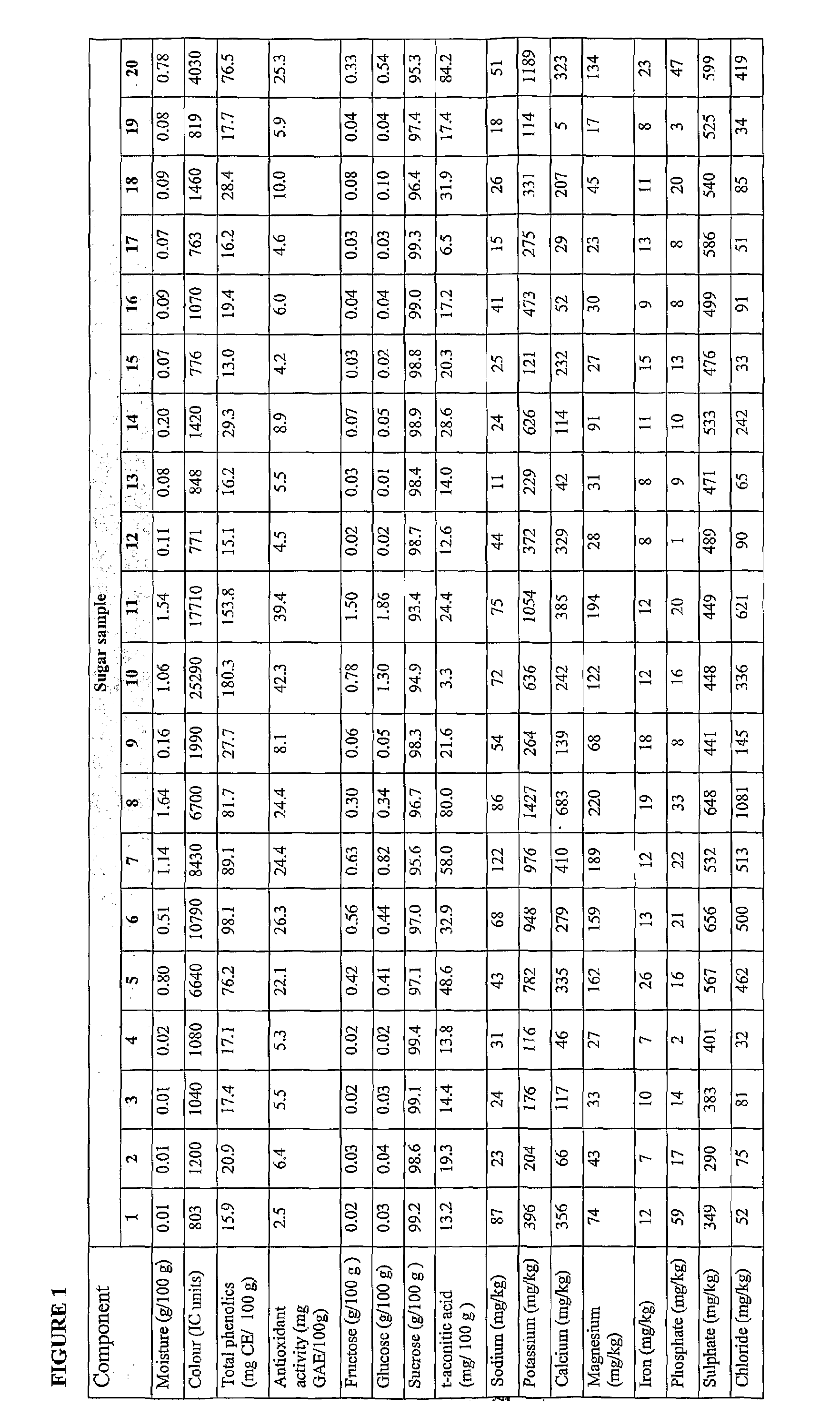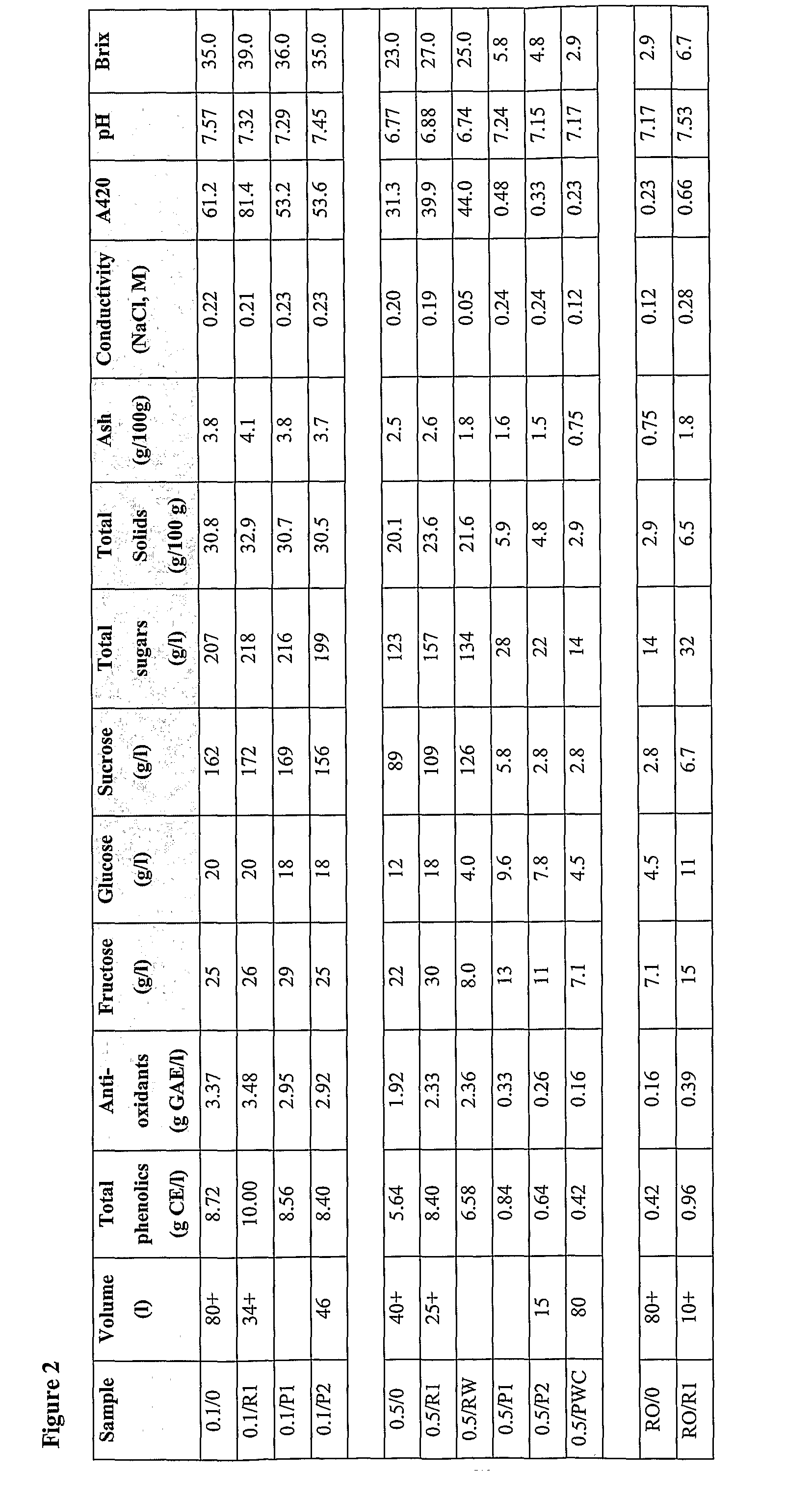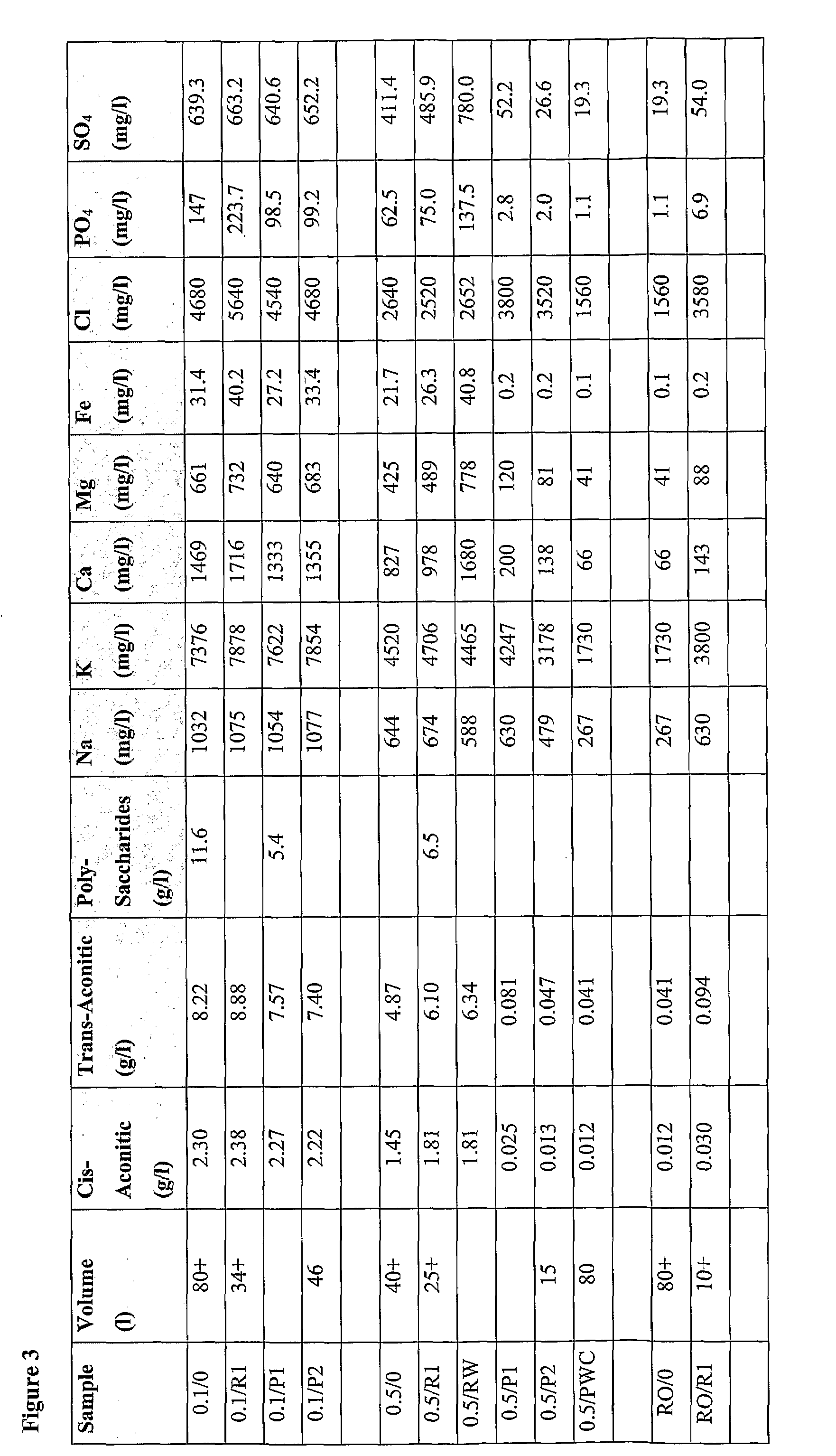Extracts derived from sugar cane and a process for their manufacture
a technology of extracts and sugar cane, applied in the field of extracts derived from sugar cane, can solve the problems of complex and variable composition of cane sugar products and waste streams, difficult to refine further, unpalatable for many people, etc., to improve dispersion, absorption and efficacy, and increase the active phytochemical content of coffee products without increasing bitterness
- Summary
- Abstract
- Description
- Claims
- Application Information
AI Technical Summary
Benefits of technology
Problems solved by technology
Method used
Image
Examples
example 1
[0165]In this example, molasses was treated using the method according to the second aspect of the invention.
[0166]Method[0167]Step 1: Molasses was diluted with water in a 1:1 ratio and adjusted to a pH of 7.2 with 5% NaOH solution, and heated to 75° C. The mixture was allowed to stand for 30 minutes at 75° C. until a precipitate of Ca and Mg salts formed.[0168]Step 2: The mixture from step (1) was passed through ceramic or stainless steel membrane with a pore size between 0.1 to 0.5 micron at a temperature between 35 to 50° C. and the retentate of insoluble Ca and Mg salts and large particulate matter from the molasses was discarded.[0169]Step 3: The permeate from step (2) was passed through a 30 kDa ultrafiltration membrane at a temperature between 35 to 50° C., and the retentate was diafiltered, and both the retentate (R1) and the permeate (P1) were collected. The retentate (R1) contained large polyphenols, polysaccharides, peptides and proteins etc and the permeate (P1) containe...
example 2
[0184]As an example of how the syrups can be blended to produce a different functional sweetener syrup (mono and disaccharides, mono and divalent cations), four parts of the permeate from the 30 kDa filtration and one part of the permeate from 0.5 kDa filtration from Example 1 were mixed to produce a sweetener with a sucrose, glucose, fructose ratio of 5:2:2 compared to the original 30 kDa permeate (ratio 68:16:16) and original 0.5 kDa permeate 1:3:3. Such mixtures will also produce different levels of polyphenols, antioxidants and minerals and will vary in their colour intensity as measured by the absorbance at 420 nm.
example 3
[0185]The 0.5 kDa retentate from Example 1 contained between 80 to 90% of the original polyphenols and antioxidant activity found in the molasses feedstock. After this retentate was concentrated to a polyphenol content of between 20 and 50 g of CE (catechin equivalents) / 1, it was sprayed onto the surface of sugar crystals to produce a low GI sugar.
PUM
| Property | Measurement | Unit |
|---|---|---|
| temperature | aaaaa | aaaaa |
| viscosity | aaaaa | aaaaa |
| temperature | aaaaa | aaaaa |
Abstract
Description
Claims
Application Information
 Login to View More
Login to View More - R&D
- Intellectual Property
- Life Sciences
- Materials
- Tech Scout
- Unparalleled Data Quality
- Higher Quality Content
- 60% Fewer Hallucinations
Browse by: Latest US Patents, China's latest patents, Technical Efficacy Thesaurus, Application Domain, Technology Topic, Popular Technical Reports.
© 2025 PatSnap. All rights reserved.Legal|Privacy policy|Modern Slavery Act Transparency Statement|Sitemap|About US| Contact US: help@patsnap.com



